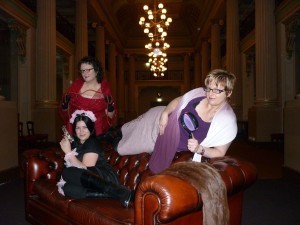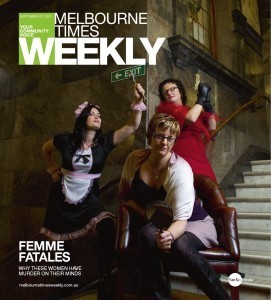P.D. Martin's Blog, page 8
November 12, 2011
The results are in
Yesterday's Murderati blog…
A fortnight ago I looked at some gender stats when it came to Aussie awards and book reviews in US and Aussie media. And then I posed two questions:
Do you prefer reading male or female authors (or don't care)?
Do you prefer reading about a male or female protagonist (or don't care)?
It's often suggested that men don't like reading books by female authors, and I wondered if it was more about the protagonist than the gender of the actual author. Is it easier for a reader to identify with a protagonist if they're the same gender? I like reading both genders (authors and protagonists) but if push came to shove and I was choosing between two books that appeared 'equal' in other respects, I'd probably choose the book with a female heroine.
That's me…let's check out the overall results…
Males Of 54 votes, 77.78% don't care if the author is male or female, 12.96% prefer male authors and 9.26% prefer female authors.
Of 54 votes, 77.78% don't care if the author is male or female, 12.96% prefer male authors and 9.26% prefer female authors.
Of 51 votes, 74.51% don't care if the protagonist is male of female, 19.61% prefer reading about male protagonists, and 5.88% prefer reading books with female protagonists.
Females
 Of the 162 voters, 76.54% don't care if the author is male or female, 20.99% prefer reading females and 2.47% prefer reading books written by men.
Of the 162 voters, 76.54% don't care if the author is male or female, 20.99% prefer reading females and 2.47% prefer reading books written by men.
Of the 157 voters, 72.61% don't care if the protagonist is male or female, 22.93% prefer reading stories with a female protagonist, and 4.46% prefer reading male protagonists.
Analysis
As you can see, the results are actually pretty similar for the males and females who voted in my poll. Although, it's actually the females who are more 'sexist' when it comes to the gender of the authors, with 20.99% preferring female authors versus 12.96% of males preferring male authors.
When it comes to the protagonists, the stats are even more equivalent between men and women. Which kind of throws my hypothesis out the window!
You'll notice we had a lot more females voting (three times as many) than men, but that's probably in line with the fact that more females read crime fiction (and therefore probably this blog).
Differences in male and female brains

I guess gender differences have always interested me, but they've been especially on my radar recently because I've been helping out a colleague who's working on a non-fiction book – and it includes some fascinating info on gender differences.
One study the author found looked at risk. It was a 1999 study published in the Psychological Bulletin, by James Byrnes, David Miller and William Schafer, and it looked at general risk-taking differences between men and women. The study found that men took more risks even if it was quite obviously a bad idea, whereas women avoided risks, even when it was clearly beneficial. Obviously there are advantages and disadvantages of both attitudes towards risk.
So could attitude towards risk relate to how authors write male and female protagonists? Are male protagonists more likely to take risks, which draw the readers in and add to a novel's excitement? Risk, certainly in thriller novels, is an essential element of creating an edge-of-the-seat experience for readers. Having said that, while protagonists do have to take some risks, they also have to be believable. So are risks taken by male characters generally more believable, perhaps because we know at some level that it's less likely for a woman to take risks. To charge off after the bad guy. To walk down that dark alley to see if she really did hear someone scream? Is that cool risky behaviour, or stupidity if it's a woman doing it?
Given my poll showed that most of my readers like reading both male and female authors and characters, maybe gender differences and risk simply aren't in the equation for you. I'm kind of going off on a tangent, but this research has got me thinking that maybe risk is another spin to the age-old claim that men prefer reading male authors…do they simply like reading about males taking risks? For me, personally, I don't think risk-taking attitudes come into it, because I love reading about a kick-ass female character who's going to jump off buildings and get invovled in shoot-outs to get the bad guy.
October 27, 2011
It's a man's world
My Murderati post from 27 October looked at gender bias in the writing world…
Okay, the title of my post might already have some people getting ready to click off. And some of you may be dying to read the rest. But, I'm not about to go off on a feminist rant…well, not exactly. I'm going to present some fascinating facts and ask some questions. That's it! I've even got a cool poll embedded in this post asking if you have a preference for male or female authors or male or female protagonists.
If you read my last post, you know that earlier this month I took part in SheKilda, a crime convention set up by Sisters in Crime Australia. I compared it to Bouchercon with one key difference – all the authors/panelists were women.
This key difference sparked a few very interesting blogs both pre- and post- SheKilda. It started a few days before the convention, when The Crime Factory's Andrew Nette looked at the current state of play for female crime writers in Australia and PM Newton also wrote a fascinating blog on the subject, including looking at the VIDA stats that were released in the US earlier this year.
Then things really hotted up post-SheKilda, when Australia's best-selling female crime writer and ex-model Tara Moss blogged about SheKilda and gender inequity. The blog was interesting, informative and well-written but it was when one of Melbourne's book reviewers got on and commented that her blog was "privileged whining" that things really hotted up! As you can imagine. You can check out the blog and comments.
So, I wanted to present some of the facts from these blogs in a combined format and to a wider audience – the wonderful Murderati authors and readers. But most importantly, I want to ask WHY? But onto the why in a second.
Awards
Australia's Ned Kelly Awards for crime fiction and true crime have been running for 16 years. During that time, only one woman has won the 'top prize' of best fiction book. In fact, it was this gender inequity that lead Sisters in Crime Australia to establish the Davitt awards in 2001. The 2011 winners were in my last post.
Then there's our Miles Franklin Award (which is actually named after a woman, Stella, who often wrote under the name Miles Franklin). Since 1957, the award has been given to a woman only 13 times, and a woman has won two out of the last 10 awards. In fact, this year a group of women set up the Stella Prize to address this gender imbalance.
So now Australian female writers have the Davitt Awards and the Stella Prize.
Getting reviewed
PM Newton's blog brought my attention to some US stats released by VIDA earlier this year. No doubt many of you saw them. Basically, they showed a major inequity in terms of the gender of book reviewers and authors reviewed. It seems it's easier to get your book reviewed if you're a male author.
VIDA lists examples from different publications. The New York Times Book Review section was the most gender neutral, with 35% of the books reviewed written by women. The fact that this stat was the BEST shows you how bad it is. For the New Yorker, the 2010 stats were that 20% of the books reviewed were written by women.
When these US stats came out, the ABC (Australian Broadcasting Commission) interviewed literary editors from The Australian, The Age and the Sydney Morning Herald and a quick tally showed a gender bias towards reviewing male authors. For the interview, The Age's Jason Steger checked "the last couple of weeks" and found 15 of the books reviewed were written by women, versus 23 by men (that's 39% female authors). This was despite the fact that the gender break-down of book releases is actually 50/50.
The why?
Now, while I wanted to present the above information to put this post in context, my main question is why? Are males simply writing better books, more worthy of awards and reviews? Publishers and agents will tell you that men prefer reading male authors. In fact, I emailed my publisher to say I liked the ring of 'PD Martin' and the fact that it would fit on one line…she was thrilled because she said 'Lots of guys won't pick up books written by women.'
But I often wonder if it's more about the protagonist. So, let's get some stats of our own together…
Note: Please make sure you respond to only TWO questions (i.e. females use the first two polls/questions for your responses, males the second two questions).
<a href="http://polldaddy.com/poll/5611757/" mce_href="http://polldaddy.com/poll/5611757/&qu... Do you prefer reading:</a> <a href="http://polldaddy.com/poll/5611759/" mce_href="http://polldaddy.com/poll/5611759/&qu... Do you prefer protagonists to be:</a>
<a href="http://polldaddy.com/poll/5611766/" mce_href="http://polldaddy.com/poll/5611766/&qu... Do you prefer reading:</a> <a href="http://polldaddy.com/poll/5611768/" mce_href="http://polldaddy.com/poll/5611768/&qu... Do you prefer protagonists to be:</a>
The results should show and update automatically once the votes start coming in. I'm looking forward to seeing the results of my little poll but please also comment below  And feel free to share the poll.
And feel free to share the poll.
October 13, 2011
It's a wrap
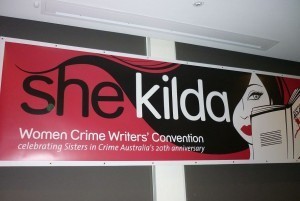 On the weekend I attended the ten-yearly (yup, not annual, not bi-annual but once a decade) SheKilda. It was actually the second ever SheKilda, to mark Sisters in Crime Australia's 20th anniversary and the 10th anniversary of the first SheKilda. Happily, they are talking about maybe having another one in five years! I'm going to push for two years.
On the weekend I attended the ten-yearly (yup, not annual, not bi-annual but once a decade) SheKilda. It was actually the second ever SheKilda, to mark Sisters in Crime Australia's 20th anniversary and the 10th anniversary of the first SheKilda. Happily, they are talking about maybe having another one in five years! I'm going to push for two years.
Anyway, having attended Bouchercon once, I was hoping that SheKilda would follow a similar format and, of course, be as wonderful and successful as the US convention. And I was NOT disappointed. It was an amazing weekend. A time for authors and readers to talk, exchange ideas and in the case of the authors complain that our partners don't understand what we do and how tough it is.
One of the key differences between SheKilda and Bouchercon is that SheKilda was conceived and produced by Sisters in Crime and so all the authors were women. In terms of the audience, I'd say it was probably about 95% women too, but then again most crime readers are female.
The main difference between SheKilda and most of the other writing events I've attended (except Bouchercon) is that it was set up as a convention rather than a writers festival. The sessions and activities were centred almost entirely around the hotel venue (Rydges in Carlton, Melbourne). To my knowledge, this makes SheKilda the only one of its kind in Australia. They even served morning tea, lunch and afternoon tea in a common area near the venues, so we didn't have to stray too far from the action or pound the pavement in the search of lunch.
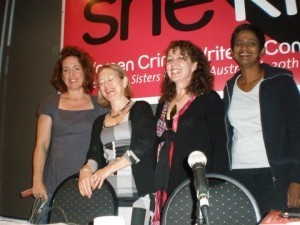 The weekend kicked off with the Friday night gala opening. It was a chance for all the authors and attendees to mingle (with free champagne, red wine, white wine and beer – oh, and soft drinks too). There was also some extra yummy finger food! Then it was into one of the rooms for the official opening. MCed masterfully by Sue Turnbull (she's an amazing interviewer and MC), it kicked off with a traditional welcome from Joy Murphy Wandin, who's an elder of the Wurundjeri indigenous people. Then it was on to the entertaining (funny) City of Melbourne Councillor Ken Ong, then Mary Delahunty of Writing Australia and then the keynote address from Margie Orford, one of the three international guests for the convention. She gave a stunning speech about the setting for her novels and hometown (Cape Town). Apparently the murder rate there is so high that forensics will only be called if they think the murder might make the TV news. There have even been cases of people travelling to Cape Town to specifically arrange murder – hoping their victim will simply go into the massive pile of unsolved murder cases on some homicide cop's desk. Margie's police contact will often have 200 files on his desk.
The weekend kicked off with the Friday night gala opening. It was a chance for all the authors and attendees to mingle (with free champagne, red wine, white wine and beer – oh, and soft drinks too). There was also some extra yummy finger food! Then it was into one of the rooms for the official opening. MCed masterfully by Sue Turnbull (she's an amazing interviewer and MC), it kicked off with a traditional welcome from Joy Murphy Wandin, who's an elder of the Wurundjeri indigenous people. Then it was on to the entertaining (funny) City of Melbourne Councillor Ken Ong, then Mary Delahunty of Writing Australia and then the keynote address from Margie Orford, one of the three international guests for the convention. She gave a stunning speech about the setting for her novels and hometown (Cape Town). Apparently the murder rate there is so high that forensics will only be called if they think the murder might make the TV news. There have even been cases of people travelling to Cape Town to specifically arrange murder – hoping their victim will simply go into the massive pile of unsolved murder cases on some homicide cop's desk. Margie's police contact will often have 200 files on his desk.
Saturday kicked off with a joint session with all the international guests, Margie Orford, Shamini Flint and Vanda Symon. It was a great opening to the day's events and was followed by Tara Moss launching Scarlet Stiletto: The Second Cut, a collection of award-winning short stories by women crime writers.
For my other morning session, I attended Drawing the Line: Whatever!, which looked at how the line is drawn between a young adult novel and an adult novel. YA authors Marianne Delacourt, Karen Healey and Nansi Kunze were led by Alison Goodman. It seems violence was one key determiner, but sex was a more important one. For example, editorial notes removing the word "straddled" were discussed!
After lunch, I was on a panel with Narelle Harris, Marianne Delacourt, Alison Goodman and Kim Westwood, chaired by Tara Moss. The panel looked at bending the rules in terms of genre — mixing genres, moving genres, etc.
After my choc-chip cookie at afternoon tea it was time for my second panel of the day, Conquering the World: Heroes Abroad. This panel was chaired by Angela Savage and together with Lindy Cameron, Malla Nunn and LA Larkin we all explored setting our books overseas. Angela's are set in Thailand, Lindy's Redback is set in several locations, Malla's are set in South Africa in the 1950s and Louisa's first book is set in Zimbabwe and Australia and her second in Antarctica. And then of course mine are set in the US.
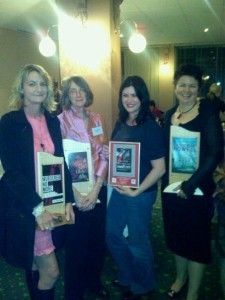 Saturday night was the Davitt Awards, which were created to support Aussie female crime writers – who often seemed to be overlooked in our other crime awards. The winners that night were (from left to right):
Saturday night was the Davitt Awards, which were created to support Aussie female crime writers – who often seemed to be overlooked in our other crime awards. The winners that night were (from left to right):
Best true crime: Colleen Egan
Best YA crime fiction: Penny Matthews
Best fiction honourable mention: Leigh Redhead
Best fiction: Katherine Howell (who was my guest here in July)
There was also a reader's choice award for fiction, which went to PM Newton (not in pic).
I kicked off Sunday morning with a panel called Brave New World: Or Death of the Book. As you can imagine, we spent the hour talking about ebooks in Australia and around the world. A recent stat for Australia is that the current $35million ebook market will increase to anything from $150 million to $700 million in the next three years. Big numbers!
After morning tea, I was an audience member for In the Face of Evil: Encounters with the Guilty, where true crime writers Rochelle Jackson, Robin Bowles and Ruth Wykes talked about their interviews and encounters with real-life crooks and murderers. And then I sat in on Them that Really Do it, which featured authors who used their past/present careers in their writing. Katherine Howell (ex-paramedic), YA Erskine (ex-cop), Helene Young (pilot), Kathryn Fox (ex-doctor) and PM Newton (ex-cop) were on the panel.
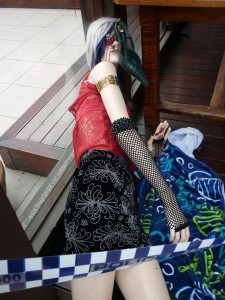 After lunch was Body in the Pool, which gave the SheKilda attendees an insight into how things would really happen if/when a dead body is found. The body had been on display by the pool all weekend and the experts included someone from police (actually our ex-assistant commissioner, Sandra Nicholson), a bug expert Mel Archer and a forensic pathologist. Timing (real versus that portrayed in crime fiction and crime TV) was also considered. At least 6-8 weeks for the entomology report and 10 weeks for the autopsy report.
After lunch was Body in the Pool, which gave the SheKilda attendees an insight into how things would really happen if/when a dead body is found. The body had been on display by the pool all weekend and the experts included someone from police (actually our ex-assistant commissioner, Sandra Nicholson), a bug expert Mel Archer and a forensic pathologist. Timing (real versus that portrayed in crime fiction and crime TV) was also considered. At least 6-8 weeks for the entomology report and 10 weeks for the autopsy report.
It was an amazing, amazing weekend. A chance to talk to other authors, share stories (often complaining about how badly we're paid!!) and expose ourselves to some great authors who are new to us. I kept my hand in my pocket over the weekend, but only because I'm sure Santa is bringing me a kindle for Christmas so I'll wait and purchase the many fabulous books now on my 'to buy' list as ebooks!
What authors have you 'found' at a convention and then bought their books?
September 28, 2011
The photo shoot to kill for
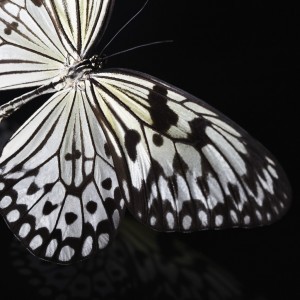 Part of an author's life is publicity. And, let's face it, for the most part publicity is fun! You write in a cocoon for many, many months and then you emerge and get to flap your wings and show off all the pretty patterns. Well, it's kind of like that.
Part of an author's life is publicity. And, let's face it, for the most part publicity is fun! You write in a cocoon for many, many months and then you emerge and get to flap your wings and show off all the pretty patterns. Well, it's kind of like that.
For many authors, I know publicity can be a drag. For the shy, retiring type of author, publicity can be daunting and scary. Then there are the really, really big authors who do world tours and get a few weeks taken out of their writing schedule each year. They're shepherded from city to city, country to country and plane to plane. I can see that after the first world tour (or maybe the tenth) that might get a little old.
For most of us, the publicity rounds are more sedate. And it depends on your publishing house and publicist too. My five books are released in Australia through Pan Macmillan Australia. They assigned me a fabulous publicist and for the two weeks around the launch of each book I'd block out time for media interviews. Lots were over-the-phone radio interviews, but then also some print stuff with the occasional photo shoot. However, in the US I didn't have a publicist and so the publicity and media stuff was pretty much non-existent. The other weird thing about publicity is that by the time a book is released, you're already well into writing the next book. So you have to get your head out of the current WIP and back into your last book.
But that's not what this blog is about…today I want to talk about the best photo shoot of my career to date. And it's not to publicise an upcoming novel. Next month, 7-9 October, I'm part of an Australian crime convention called SheKilda. It's only the second of its kind (the first/last one was 10 years ago) and I'm hoping it's going to be like Bouchercon for Aussies. It's being hosted by Sisters in Crime Australia, so it's only female crime writers (authors, journalists and TV writers) but there are still over 70 authors on 35+ panels. Needless to say, I can't wait!!!! I'm using the pun – a killer weekend.
But I've digressed again. So, a couple of weeks ago, as part of the publicity for SheKilda, I was asked to take part in an interview with two other Melbourne-based authors, Angela Savage and Leigh Redhead. First I went into city and talked to the journalist over coffee, then the next day we met at the Victorian State Library for the photo shoot. The theme: modern-day Cluedo. The three of us had to pick a colour – my first difficulty. You see, like many Melbournians about 90% of my wardrobe is black. Anyway, I managed to hunt out some purple and so I was Professor Plum (in the library – literally).
The first pose was on a Chesterfield with magnificent lights in the background. Angela Savage lay on the lounge with a dagger, Leigh Redhead had the gun and I had a magnifying glass. The second pose was Leigh lying on the lounge, me lying on the top of it (balance was required, people!) and Angela behind us, looking a little too excited to be holding a rope in her gloved hands. This one made it into the article and I also got a way less slick pic on my little camera.
Next we were near an old marble staircase. I was sitting, magnifying glass in hand (I sooo wanted a gun) and Angela and Leigh were behind me, backs against the wall like they were about to kill each other (or maybe me). That one made the front cover of the Melbourne Times Weekly and is also the pic featured in the online version.
Then we did a Charlie's Angels style pose. Again, I got one on my camera. This was a special moment for me, because I was able to play out one of my childhood fantasies — I was one of Charlie's Angels! Sad, but true 
I don't know if you can see it in the pics, but it was a seriously fun shoot. Angela, Leigh and I were like excited school girls – with fake guns, knives, etc. And while most photo shoots take 5-15 minutes, this one went for nearly two hours!
It's all in the look
When you're posing for photos, it can be hard to work out what expression to use. Even though we were having fun and getting into it, do you go for sexy? Serious? Smug? Leigh and I joked about the classic crime writer "look". Crime authors need to refine a little sexy smirk that says: "I know something you don't know." And the thing we know? Whodunit. And that's kind of important in a murder mystery.
September 1, 2011
Everyone was Kung Fu fighting
My latest blog over at Murderati…
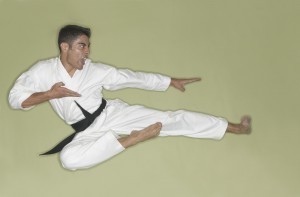 This is another instalment in my research series and I've just realised I seem to be working backwards. The posts on my research into real-life vampires and cults (part 1 and part 2) all looked at research that happened for Kiss of Death (my fifth book) and today's post is about Kung Fu's Ten Killing Hands and dim-mak, which featured in my fourth book. Anyway…get ready to be wowed by the world of Kung Fu!
This is another instalment in my research series and I've just realised I seem to be working backwards. The posts on my research into real-life vampires and cults (part 1 and part 2) all looked at research that happened for Kiss of Death (my fifth book) and today's post is about Kung Fu's Ten Killing Hands and dim-mak, which featured in my fourth book. Anyway…get ready to be wowed by the world of Kung Fu!
The Ten Killing Hands
The Ten Killing Hands, developed by Wong Fei Hung in China, are ten kung-fu strikes (or series of strikes) that are meant to either severely disable or kill your opponent, sometimes with one blow. It boils down to ten principles: strike the eyes; stop the breath; break the face; explode the ears; crush the groin; twist the tendons; break the fingers; dislocate the joints; break the elbow, and attack the nerve points. It's nasty, but effective. And, in the hands of a trained practitioner, deadly.
I'll give you a little taste. One of the strikes used to break the face is the Double Back-Fist targeted directly below the eyes – the aim is to blind your opponent by shattering their eye sockets so their eyeballs literally collapse over their face structure. Nice, huh?
Dim-mak While the Ten Killing Hands are fascinating, probably the most interesting research I did was on dim-mak. Dim-mak is often referred to as the death touch, and is based on the premise that striking certain acupoints can cause instant or delayed death. It sounds like the stuff of fairytales — of legends and movies like Kill Bill — but it's real. And in fact, Uma Thurman's Five Point Palm Exploding Heart Technique in Kill Bill is about five blows, in a specific order, which will stop blood flow to the heart. And that is dim-mak.
While the Ten Killing Hands are fascinating, probably the most interesting research I did was on dim-mak. Dim-mak is often referred to as the death touch, and is based on the premise that striking certain acupoints can cause instant or delayed death. It sounds like the stuff of fairytales — of legends and movies like Kill Bill — but it's real. And in fact, Uma Thurman's Five Point Palm Exploding Heart Technique in Kill Bill is about five blows, in a specific order, which will stop blood flow to the heart. And that is dim-mak.
There are multitudes of dimmak acupoints on the body, and strikes to different points cause different physical afflictions. For example, one of dimmak's strike points is on the side of a person's neck. In Kung Fu it's called Stomach Point 9, but it's also directly on the carotid artery and vagus nerve. A strike to Stomach Point 9 is said to bring instant or delayed death and there is science behind the claim. The best book I found on this was Death Touch: The Science Behind the Legend of Dim-mak by Dr Michael Kelly. Dr Kelly is an MD who also happened to study Kung Fu and decided he wanted to explore dim-mak from a medical perspective.
The book is amazingly thorough and quite technical in places, talking about how the dim-mak strikes often target bundles and/or peripheral nerves, and attacking these points can cause changes in the autonomic nervous system — which controls important stuff like blood pressure, heart rate, digestion, breathing, and so on. The theory is that direct strikes can fool the nervous system into doing something it wouldn't normally, like speeding up your heart rate or increasing your blood pressure.
Sometimes the explanation is more simple…back to Stomach Point 9. These days, many people have plaque build-up in their arteries, especially if they're older, have a genetic predisposition or unhealthy eating habits. So, if you strike someone on their neck with enough force and in a particular manner they can have a heart attack or stroke instantly, or days later when the loosened plaque makes its way to their heart or brain. Plus, a hard strike, even on a healthy person, can cause degradation of the artery that may have lethal effects down the track.
 Although other organs are targeted, the heart is often the focal point for dim-mak strikes. The pressure points attack the heart in one of three ways – heart attack, ventricular fibrillation or something called heart concussion. Again, Dr Kelly's book came in handy! The medical, Latin term for heart concussion is commotio cordis. It's not a common cause of death, not something you read about much in the newspaper, because it's rare to have a strike directly to the heart that's hard enough to cause it. Most reported cases involve sporting accidents, like trauma from a hockey puck, a baseball, a hockey stick, etc. But obviously if a trained Kung Fu practitioner can elicit enough force…
Although other organs are targeted, the heart is often the focal point for dim-mak strikes. The pressure points attack the heart in one of three ways – heart attack, ventricular fibrillation or something called heart concussion. Again, Dr Kelly's book came in handy! The medical, Latin term for heart concussion is commotio cordis. It's not a common cause of death, not something you read about much in the newspaper, because it's rare to have a strike directly to the heart that's hard enough to cause it. Most reported cases involve sporting accidents, like trauma from a hockey puck, a baseball, a hockey stick, etc. But obviously if a trained Kung Fu practitioner can elicit enough force…
The dim-mak knockout
The dim-mak knockout, also called a pressure-point knockout, is famous in many circles. One, two or three strikes and the person drops to the ground. Many dim-mak experts use these strikes to demonstrate the power of dim-mak in workshops and seminars. According to the medical explanation it's a vasovagal faint, caused by a sudden drop in blood pressure.
Yin and yang
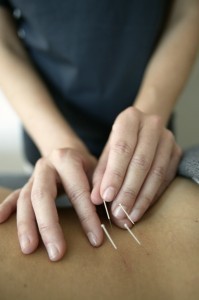 Of course, the acupoints aren't just about dim-mak and martial arts. The more commonly known use of these acupoints comes from Chinese healing — acupressure or acupuncture. The points are struck to cause pain and death, but they can also be massaged or stimulated with acupuncture for healing purposes. They go hand in hand, for use as a weapon or as a healing tool. Yin and Yang.
Of course, the acupoints aren't just about dim-mak and martial arts. The more commonly known use of these acupoints comes from Chinese healing — acupressure or acupuncture. The points are struck to cause pain and death, but they can also be massaged or stimulated with acupuncture for healing purposes. They go hand in hand, for use as a weapon or as a healing tool. Yin and Yang.
Stomach Point 9 also has a healing purpose in Western medicine. The site of the carotid sinus and vagus nerve is an extremely sensitive area and when someone's suffering from an arrhythmia, doctors will often use 'vagal maneuvers' as a treatment. A simple massage along the vagus nerve has been shown to decrease the chances of a fatal ventricular fibrillation.
Now, I'm afraid I do feel it necessary to take this chance for a bit of BSP (blatant self-promotion) in terms of my book trailer for The Killing Hands. But it IS very relevant!
At this point I should also mention that I hold a black belt in Kung Fu. I'm very much out of practice (haven't trained for about five years) but when I did study it my lessons were tax-deductible. Gotta love an author's tax deductions!
So, who out there studies Kung Fu or has heard of dim-mak before? And feel free to share any amazing tax deductions too!
August 23, 2011
Back to my roots
My Murderati blog on my creative roots…
Today I want to talk about the amazing feeling of going back to my roots. I'm not talking about my literal roots (i.e. my birth place or the birth place of my family), rather I mean my creative birth place. The time and place when I first decided I wanted to write. Here are some hints:



Yep, you got it! Paris.
On Monday we arrived back from a three-week holiday. Our main 'objective' was my sister-in-law's wedding in Ireland, but we also had a glorious five-day stopover. It was around March this year when my husband told me that he'd finally found a great deal to Ireland that would save us loads of money…"but do you mind going via Paris?" he said with a grin on his face. Needless to say, I was one happy woman!
So how and why is Paris my creative birth place?
I mentioned in my first Murderati blog that while I was into reading and creative writing in my primary school years, once I got to high school I ended up focusing on science and maths — maths, applied maths, physics and chemistry were my elective subjects. As a complete contrast, my other subject was physical education, with my main project on dancing. You see, I had danced pretty much all my life, and loved it. Anyway, while studying psychology and criminology at university, I was also taking lots of dance classes, around 30 hours a week at one stage, and also did acting and singing lessons. Over the next couple of years dancing petered out and singing took over. I finished my psychology degree and started studying music. Then I took time off from school and worked a bit before travelling.
I was 21 years old when I took off on the typical Aussie pilgrimage…backpacking around Europe. I went with my boyfriend for four months and it was on this trip that my creative spark burned brightly. My boyfriend at the time was (and still is) a photographer and he was also a gifted artist. So it was natural that we'd hit many of the artistic hotspots, including Paris. What can I say, I fell in love immediately. Was it the incredibly impressive buildings? The many artists who had been born or studied in Paris? The ambience of the place? The history of the place? The answer is, of course, all of these things and so much more. Coming from Australia, all our buildings and architecture is relatively new (like North America). And there's something about the sense of history that oozes from every inch of Paris (and Europe) that's inspiring and exhilarating. It drives me to create. And that feeling was there again on this visit. I mean, look at this:

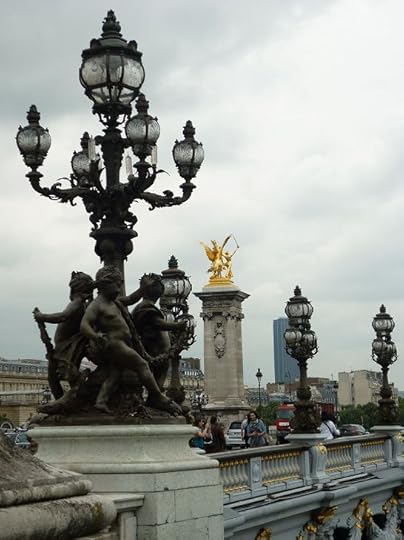
But back to my first visit to Paris…Within a few days in Paris, I wanted to write. I wanted to write my own lyrics for songs, I wanted to write poems, I even wanted to write a book. I tracked down an English bookstore in Paris and bought their one and only book on creative writing. I can't remember the name of it, but it was quite large (a university text book rather than a mass market paperback) and of course being an English book in a French-speaking country it came with a high price tag. But it was worth it.
A couple of days later, I found myself in the magical Rodin gardens. My boyfriend was drawing the amazing sculptures (like many other budding artists around us) and I was writing in a newly acquired notebook, with my creative writing text book at my side. We spent hours there (twenty years ago!) and so this trip I had to go back to the Rodin museum and gardens.
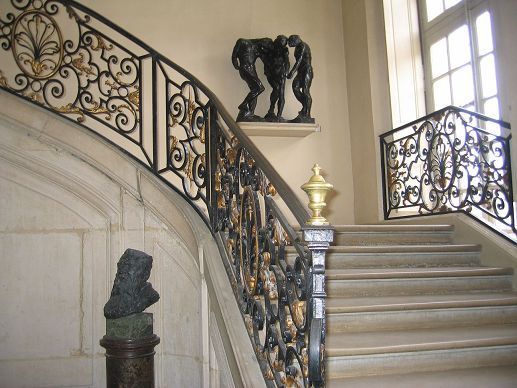
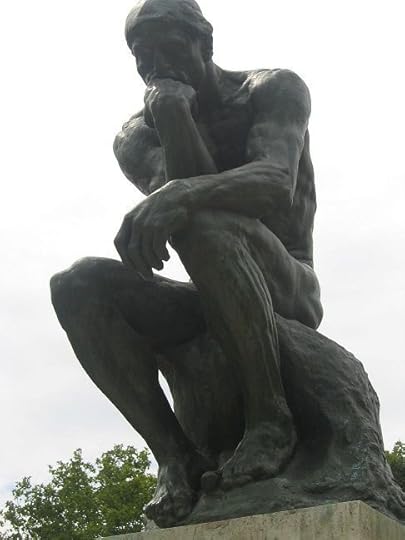
There didn't seem to be quite as many people sketching the sculptures as last time, or perhaps my memory has simply amplified the numbers I remember from my first visit. But the whole place still triggered that creative impulse.
Then there's the food. Let's just say, I ate a LOT of baguettes in five days, some not-so-nice French wine and some gorgeous French wine, loads of cheese (yummy and so much cheaper than here in Oz) and a few treats from gorgeous patisseries. I have a major sweet tooth, and passing shops like this sent my heart racing!
 From this particular place I tried the Opera cake and it was divine.
From this particular place I tried the Opera cake and it was divine.
The ambience of the restaurant and café culture is stunning, and we also did the pre-requisite visit to the Louvre. To me, every part of Paris is inspiring.
Now I'm back, safe and sound, although still a little jet lagged and with an annoying cold. But who cares…I was in Paris!
I'd like to say I can launch back into my writing, the creative spark burning incredibly brightly. But unfortunately, I've got two ghost-writing gigs on the go, and two corporate jobs. But while I'm doing those the subconscious will no doubt be ticking over, ready when I return to my new book again. And then I'll be channelling Paris!
PS The wedding was fabulous too, and Grace was the perfect flower girl!
PPS I forgot to say…Paris is also where my husband proposed to me, 13 years ago!
August 15, 2011
10,000 words in a day
 This fortnight's Murderati blog is on the writing process, in particular an amazing thing called a 10k day!
This fortnight's Murderati blog is on the writing process, in particular an amazing thing called a 10k day!
I know there are some freaks of nature whose normal output is 6,000-10,000 words a day, but for most writers it's anywhere between 1K-4K words per day. And so, it sounds impossible when you first hear or think about writing 10,000 words in one day. But it IS possible…I've done it (many times). In fact, on my debut 10K day I wrote 12,000 words!
I first heard about the 10K day at a writers' meeting in Melbourne. I was well and truly intrigued — and excited. I tend to write between 2,000 and 3,000 words a day (and I've been told that's quite a high output) but the thought of quadrupling that was mind-boggling. So I Googled 10K day to find out what it was all about. The basic rules are:
You write for four two-hour blocks (NO interruptions whatsoever).
You take a 10-15-minute break between stints.
You stock up on food and drink in between each block so you don't have to leave your seat during each session.
You clear your schedule COMPLETELY for that day.
You unplug the phone and internet (I know it's hard, but you can do it).
You don't edit or review anything you've written – just keep writing (perhaps the hardest one to follow).
You turn off your word processor's spelling and grammar check so you're not distracted by red or green lines.
You complete any necessary research and/or plot outlining work before the 10K day (or you fill in the research later).
It also helps to have a writing buddy. This commits you to the full day, and serves as further motivation when you phone each other or chat online (yes, you can turn the internet back on for the short breaks). It's not only support, but I guess a bit of healthy competition too.
My 10K days generally look like this:
9am-11am – First writing block
11-11.15am – Contact writing buddy for a few minutes, then stretch and stock up on food/drink
11.15-1.15 – Second writing block
1.15-1.30 – Second break (as above)
1.30-3.30 – Third writing block
3.30-3.45 – Third break (as above)
3.45-5.45 – Final writing block
5.45 – Chat to writing buddy
5.50 – Collapse into a chair, almost catatonic (like this woman) 
Coffee and chocolate can also come in handy. My preference is for quality coffee and chocolate (I love the Aussie brand, Haighs). Anyway…
What's the output like?
The first question I get when talking about 10K days tends to be focused on the quality of the writing. Most people's initial response is that the words on the page must be crap. Not so, I say.
First off, by not reading what you've just written, you're cutting off the inner critic. So instead of thinking: "That sounds crap, how else can I put it?" or "Oh no, that's all wrong!" you keep writing and eventually the critical voice realises you're not listening to them today and gives up. And let me tell you, it's incredibly liberating to silence that sucker!
Secondly, by not re-reading your work and virtually not stopping, you're effectively following a 'stream of consciousness' writing style. Many times when I've read what I've written in my 10K day I don't even remember writing it. And I'm almost always pleasantly surprised.
Admittedly the 10K day works really well for me because I don't plan/plot, which means I can do a 10K day whenever I can clear one full day. I don't have to plan for it by plotting out what's going to happen in the next few chapters. I do, however, do a lot of research. But that's easy to overcome in a 10K day. Your sentence might look something like this: She rested her hand on her gun, relishing the cold feel of the (gun make and model here)under her fingertips. Or maybe your character turns up at a crime scene that needs some detailed description. Simple: She pulled in behind the black and white. (Description of street/house here)
The point is, you don't stop. You don't stop for editing, for the inner critic, for research or for plot decisions. You just keep writing.
So by the end of the day, you've got 10,000 words, and rather than deleting those words you usually end up adding to them. You add in research details, you add in dialogue tags and you add in descriptions. Of course, you also edit to refine your writing, tweaking word choice and sentence structure as you go.
10K days are particularly amazing for dialogue (like I said, you can add the tags in later) and for moving the plot forward. In contrast, I can see they probably wouldn't work well for literary writers.
Of course, you can't use the 10K day to write a first draft in 8-10 days. At least I don't think you could! I find the 10K day too much of a brain-drain for a daily or even weekly part of my schedule, but once a month seems perfect for me. And, let's face it, a 10K day is a great way to get a large chunk of work done while also getting a more direct sub-conscious-to-page experience happening.
Try it out for yourself! You may not get the full 10,000 words, but I reckon you'll approximately quadruple your normal output. A fellow writer friend who was my 10K buddy one day only wrote 5,000 words, but when her normal output is 1,000 she was overjoyed with 5K. And in some of my more recent 10K days I've only made it to 8,000 words or so. But who's complaining? Not me! I juggle my writing with a pre-schooler and this year I've also been taking on corporate work so 8,000 words is massive for me.
So, what do you think of the 10K day concept?
Welcome Aussie author Katherine Howell
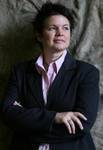 My Murderati blog from 21 July is an interview with fellow Aussie crime author, Katherine Howell. Katherine is an ex-paramedic turned author who uses her own expertise to create realistic characters and scenarios. So far, she's won two Davitt Awards (Sisters in Crime Australia) and has recently hit the best seller lists here in Oz.
My Murderati blog from 21 July is an interview with fellow Aussie crime author, Katherine Howell. Katherine is an ex-paramedic turned author who uses her own expertise to create realistic characters and scenarios. So far, she's won two Davitt Awards (Sisters in Crime Australia) and has recently hit the best seller lists here in Oz.
Her third novel, Cold Justice, has just been released in the UK. In Cold Justice, Detective Ella Marconi is on the trail of a cold case, an eighteen-year-old murder.
Katherine also has ties to other members of the Murderati gang, namely Tess Gerritsen – who had the following to say: "COLD JUSTICE races like a speeding ambulance, delivering so many surprises and thrills that you'll scarcely have time to breathe. This was one of my favorite books of the year. Katherine Howell has written a real winner!" Katherine is delighted to be interviewing Tess in Melbourne at a Sisters in Crime dinner on Saturday 27 August. You can find out more at the Sisters in Crime website. I'll be there 
You use paramedics and police almost equally in your books. Can you tell us why you decided to do that?
I always wanted to write a crime series, partly because it's what I love reading and partly because the idea of developing characters over a number of books really appealed to me. But I started the early drafts of Frantic with paramedic Sophie as the main character and no cop in sight! I felt I couldn't write a cop point of view because I didn't know the police world the same way that I knew paramedic life and worried about being able to portray it with convincing detail. I realised, though, that the story would be so much deeper and stronger if I could build the POV in, and also it was going to be a stretch to have a paramedic coming back in each book, especially if I was going to have her solve crimes! I needed to pull myself together and just do it. I have a number of cop friends who help with the facts of the job and draw on my own experience in being called as a paramedic to police stations and the cells and so on too.
And so Detective Ella Marconi was born. She's about half of each book that I write. The stories involve one and sometimes two paramedics who get caught up in crime in varying ways—sometimes they're called to a homicide scene, sometimes they find a body, sometimes they're involved personally—then Ella is one of the investigators called in on the case.
What differences do you find writing a paramedic versus cop?
The main difference is their role in the story: Ella investigates and is fairly distanced emotionally, while the paramedics are caught up and drawn in and often are very emotionally involved. The way I write each point of view differs too: I'm very comfortable writing the paramedic scenes because of my years of experience there, but with the police scenes I'm continually questioning my detective friends over each little detail: what would the detectives say here? What would they do next?
 Is Cold Justice based on something that happened to you while you were working as a paramedic?
Is Cold Justice based on something that happened to you while you were working as a paramedic?
Paramedic Georgie in Cold Justice was viciously bullied at her previous station, and when I was writing the book there were many reports in the media about bullying cases in the ambulance service and their subsequent investigations. None of this was news to me or to paramedics I knew, however. The things that happen to Georgie are a combination of tweaked stories that I'd heard, made-up events, plus a few of my own experiences. The plot however is fictional. While I use some elements of particular cases that I did (such as a burns case in The Darkest Hour), none of the plots as a whole are based on anything I did.
Tell us a bit about your writing day and space.
I have an office at home and I write at the computer (though now and again I like to take a notebook and sit in the sun). I get in there about eight or nine but I write best in the afternoons so unless I have a looming deadline I tend to spend the morning dealing with emails and working on whatever author talks or workshops I have coming up, and uni research (I'm doing a PhD in writing at the moment too). I have a big corner desk currently covered in edit notes and reports. My window looks out onto the garden, and in the co-worker department I have a big, fat, long-haired cat who sleeps in her bed on my desk and a Chihuahua pup who sleeps in a blanket on my lap. Lazy girls.
Thanks to Katherine for being my guest today!
July 8, 2011
Cult research – part 2
Thursday's Murderati post…
 So, in my last post I looked at cults and people who are drawn to join them. Even though this isn't officially my research series week, I feel compelled to deliver part 2 today! And part 2 is all about the leaders of cults, the gurus. I'd like to make it clear at the outset that I'm talking about negative, destructive cult leaders such as Charles Manson, David Koresh, Jim Jones and Shoko Asahara (leader of the Aum group who released poison in the Tokyo subway).
So, in my last post I looked at cults and people who are drawn to join them. Even though this isn't officially my research series week, I feel compelled to deliver part 2 today! And part 2 is all about the leaders of cults, the gurus. I'd like to make it clear at the outset that I'm talking about negative, destructive cult leaders such as Charles Manson, David Koresh, Jim Jones and Shoko Asahara (leader of the Aum group who released poison in the Tokyo subway).
Most NRMs/cults have a single leader, a guru who claims 'enlightenment' and promises salvation to his or her disciples or would-be followers.
There have been many fascinating books and articles written on gurus, such as psychiatrist Anthony Storr'sFeet of Clay: Saints, Sinners and Madmen, a Study of Gurus. In this book, Storr explores specific gurus (one chapter per guru); however, his introduction is particularly enlightening for general observations. As well as identifying gurus as elitist, narcissistic, arrogant, anti-democratic and intolerant of even minor criticism, he also concludes that they often experienced isolated childhoods. Storr's negative observations don't stop there either. He goes on to say that anyone can become a guru if he/she claims spiritual gifts and has the gumption to do so.
Gurus have also been 'explained' using two models – the psychopathology model and the entrepreneurial model. In a 2005 article for the Journal of Cognition and Culture, M. Upal talked about the first model, in which gurus have some sort of mental illness such as hysteria, paranoia or schizophrenia and experience hallucinations that they perceive as divine wisdom. Certainly Manson seems to be an example of this type of cult leader. The entrepreneurial model, as the name suggests, is more about the guru as entrepreneur – they're in it for money and power. And there is a lot of power for gurus.
In most cults or NRMs, the members' daily movements and routines are closely monitored and the guru usually has complete control over the disciples. This is an essential step in the guru's wielding of power. Luna Tarlo, mother of American guru Andrew Cohen, has talked about how her son lashed out at his disciples. Although he justified it by saying that disintegrating the personality leads to finding a true sense of self, his mother (who was also a disciple for some time before leaving the NRM) ended up describing it as cruelty.
One of the ex-disciples I interviewed for a non-fiction book I'm working on, talked about many acts of cruelty and humiliation in the cult she was part of. Punishments dished out by her guru included banning married couples from living together, making 'disobedient' disciples comb the streets and pick up trash from dawn to dusk, forcing family members and disciples to eat out of dog bowls and general verbal abuse.
Storr also talks about gurus getting pleasure from exercising their power over disciples by ordering them to perform meaningless tasks and/or by punishing disciples who stepped out of line.
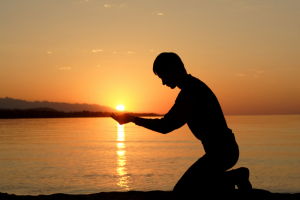 It's hard for many of us to understand this power of the guru. And while the power is often abused and is something ex-disciples site as negative, at the same time even these people have strong positive feelings about what a guru is, or should be. Luna Tarlo likened surrendering to a spiritual teacher to falling in love, in terms of intensity. And even the ex-disciple I spoke to said: "The relationship between the disciple and the guru is very, very sacred. You are born on this earth to meet up with one person, and that one person is your guru."
It's hard for many of us to understand this power of the guru. And while the power is often abused and is something ex-disciples site as negative, at the same time even these people have strong positive feelings about what a guru is, or should be. Luna Tarlo likened surrendering to a spiritual teacher to falling in love, in terms of intensity. And even the ex-disciple I spoke to said: "The relationship between the disciple and the guru is very, very sacred. You are born on this earth to meet up with one person, and that one person is your guru."
In terms of the dynamic between the guru and the disciple, it seems it's difficult to explain. Descriptions range from spiritual saviour to abuser. In The Guru Papers, authors Joel Kramer and Diana Alstad describe the power of a guru over his disciples as the most absolute power in existence.
Whether that power is good or bad is something that's debated by current NRM members and those who've turned their back on their old guru and cult life. For those willing followers, the guru is everything – their light, their reason for being and their saviour. But for ex-members, they often perceive their old gurus as someone who physically and emotionally abused them.
From a psychological perspective, cult leaders have been defined as having both narcissistic personality disorder and/or as being psychopaths. Some traits of narcissistic personality disorder include: grandiose sense of self, need for admiration from others, lack of empathy, preoccupation with fantasy worlds (in which the person has unlimited success, followers, etc.), exploitation of others, and arrogant behaviour. This certainly does gel with many gurus and their behaviour. It's even been said that NRM leaders possess similar traits to serial killers (!) in the way they take power and sex to the extremes (quoted by Upal (2005), original source Wilson (2000)). It's certainly an extreme statement, yet some of the personality traits do seem to be shared.
In Captive Hearts, Captive Minds Madeleine Tobais and Janja Lalich identify the following as characteristics of cult leaders:
glibness and superficial charm;
manipulative and conning behaviour;
grandiose sense of self;
pathological lying;
lack of remorse, shame or guilt;
shallow emotions;
incapacity for love;
need for stimulation;
lack of empathy;
impulsive behaviour (child-like);
early behavioural problems (conflicts with authority figures and/or poor academic results);
unreliable behaviour;
promiscuous sexual behaviour;
no real life plan (cult is the life plan); and
criminal or entrepreneurial versatility.
Many of these fifteen elements overlap with traits of narcissistic behaviour and some of the personality traits often displayed by serial killers. I'm sure the Murderati readers and authors who've researched or read about serial killers can see the overlap!
What do you think? Are the gurus who lead in this destructive manner like serial killers?
PS In my next post, I'll be interviewing Aussie author Katherine Howell.
June 23, 2011
Cult research – part 1
Here's my Murderati blog from 22 June. As part of my research series, this post focuses on the weird and wonderful research crime writers do in the name of good books!
Today, I want to look at some of the fascinating research I've conducted into cults (mostly for my fifth novel, Kiss of Death, although I'm also currently ghost writing a non-fiction book called Death in a Cult). In fact, I've got so much to say on this subject that I've broken the post into two parts! This first post will be a bit of an introduction and look at some of the psychology behind cult members. Then, next post I'll focus on gurus.
The word cult immediately rings alarm bells for most people – we think of Charles Manson and his murderous followers, of Jim Jones and the estimated nine hundred and seventeen members who died with him at Jonestown, of David Koresh and Waco and of the Tokyo subway poisoning by Aum. In fact the word "cult" has got so many negative connotations that cults themselves want to disown the term. And who wouldn't when it paints a modern-day group with the same brush as Charles Manson, Jonestown and Waco?
So what is a cult? The Random House dictionary has several definitions – from the more neutral 'a particular system of religious worship' to the negative 'a religion or sect considered to be false, unorthodox, or extremist, with members often living outside of conventional society under the direction of a charismatic leader'.
 By these definitions, cults have been around for thousands of years. For example, some hunter-gatherer tribes had a cult-like belief system and structure with the shaman as guru; the Assyrians around 880BC have been described as a tree-worshiping cult; and let's not forget the recently revived Knights Templar and Opus Dei, which can easily be described as cults.
By these definitions, cults have been around for thousands of years. For example, some hunter-gatherer tribes had a cult-like belief system and structure with the shaman as guru; the Assyrians around 880BC have been described as a tree-worshiping cult; and let's not forget the recently revived Knights Templar and Opus Dei, which can easily be described as cults.
In the past few decades our understanding and tolerance of cults has increased, largely due to the many studies in this area. Scholars such as sociologists and psychologists have studied cults, cult members and their leaders. These scholars generally use the more politically correct term of new religious movements or NRMs for short.
It should also be noted that the bad wrap cults have is largely due to destructive cults. And while it's these cults we tend to hear about in the media, there are thousands and thousands of other cults that simply go about their business.
NRM members
People outside cults/NRMs often wonder what sort of person is attracted to a cult. In fact, many people believe that cult members are somehow mentally unstable, depressive or simply weak. Psychologists have studied members, cults and their leaders (gurus) looking for patterns and commonalities. And some of the recent studies have revealed some distinctive personality traits in members and ex-members of NRMs. For example, a 2008 Belgium study looked at ex-members of NRMs and compared them to the general population and to current members of NRMs on certain self-reported personality traits. The study, conducted by Coralie Buxant and Vassilis Saroglou, identified four main areas of vulnerability: insecure attachment to parental figures during childhood; limited social relationships; negative life events; and a higher need for order. The negative life events were traumas such as the death of a loved one, marriage break up, major life-threatening illness, bankruptcy, etc.
Other research has found that people who join new religious movements often share characteristics such as: a sense of not belonging during childhood and adulthood; identity confusion or crisis; alienation from family; feelings of powerlessness; a recent psychological stressor; low self-esteem; and social anxiety. Notice the cross-overs from the list above.
Are cults dangerous?
History has shown us that cults certainly can be dangerous – but many cults are harmless.
Deciding whether a cult is dangerous – and how to deal with it – generally falls into the hands of law enforcement. In a 2000 article for the FBI Law Enforcement Bulletin, experts identify risk factors, neutral factors and positive or protective factors within NRMs.
 Risk factors include:
Risk factors include:
a history of violent episodes or clashes;
the leader's past or present state of mind and condition (e.g. violence, drug or alcohol abuse, etc.);
an abrupt reversal of direction (positive or negative);
recent attempts to obtain the knowledge to carry out a violent act;
recent purchases of weapons or other arms;
training in the use of weapons;
instances of violence within the NRM;
setting an exact date for the imminent transformation of life on earth;
moving the date of that transformation;
phrasing prophesies or predictions in a detailed and specific manner (otherwise they tend to be vaguer so the leader can't be proved wrong);
envisioning an active role for the NRM in the coming transformation; and
having the knowledge, means and ability to carry out a plan.
And while some of these risk factors are obvious — it's common sense that any group stockpiling weapons (or purchasing a tank like the one above!) is potentially dangerous — other factors are not as readily identified by the general public. However, it makes sense that if a guru is very specific, for example claiming the world will come to an end on a certain date, that they may plan a mass suicide of their followers before or on that date in 'preparation' for the coming Armageddon.
The FBI article is also quick to point out that just because an NRM has one or more of these risk factors, it doesn't mean the group's about to implode (suicide) or explode (committing violence against the public or law enforcement).
The authors also stress that a dynamic or situation that we may think is strange or dangerous, isn't necessarily so. The neutral factors identified are: members offer absolute and unquestioning adherence to their leader and the belief system; the group physically segregates itself from others; and members adopt unfamiliar customs or rituals (i.e. diet, dress, language, etc.). In fact, these three factors are often present in all NRMs.
The law-enforcement experts also talk about "protective" factors – factors that will make a cult less likely to be violent. These factors are: members taking practical steps to plan for the future; and the group adopting routines and administrative processes (e.g. transcribing teachings and disseminating information about their group to others).
So, that's it for cults and me today. I hope you were glued to the page/computer just like I was when I was reading these research materials!


